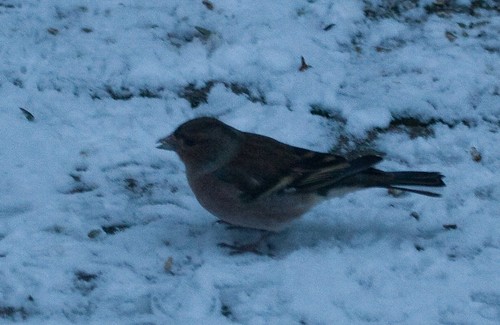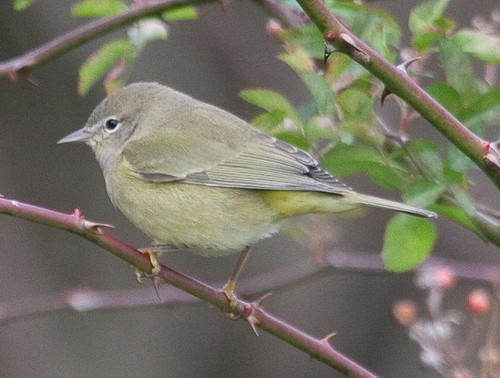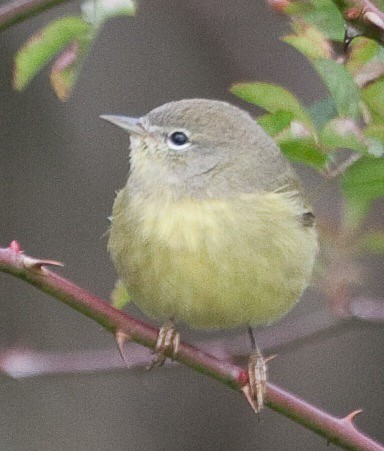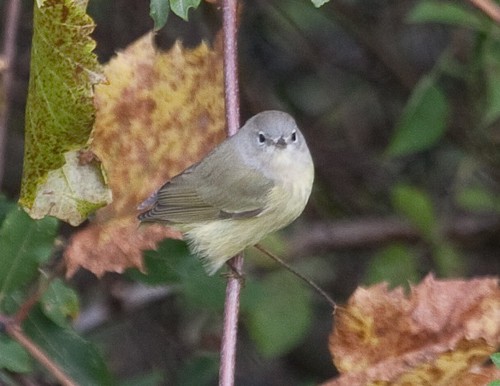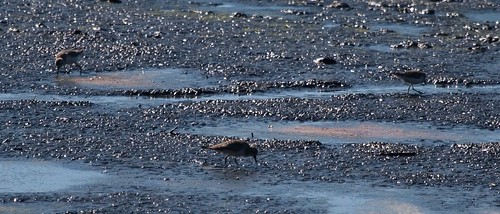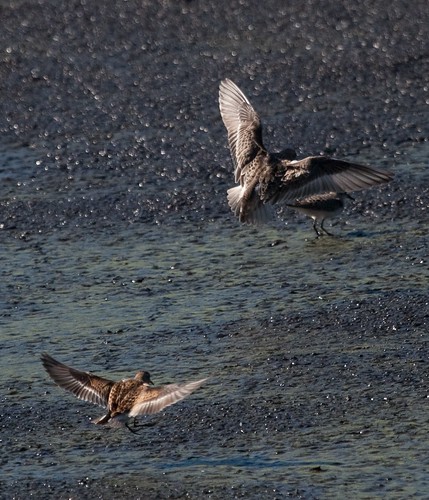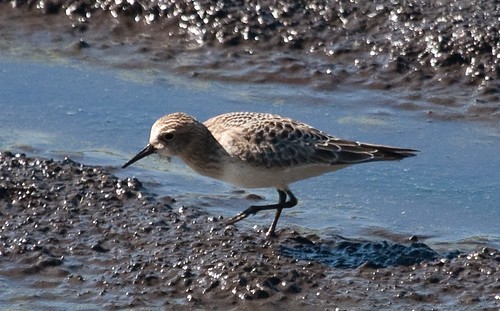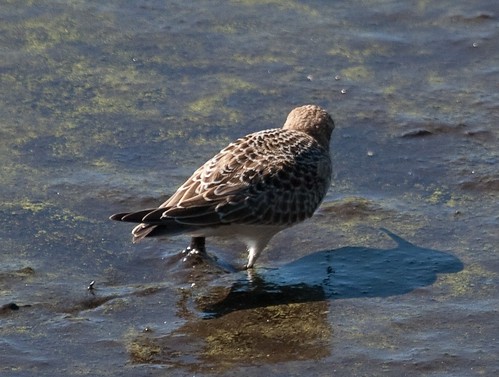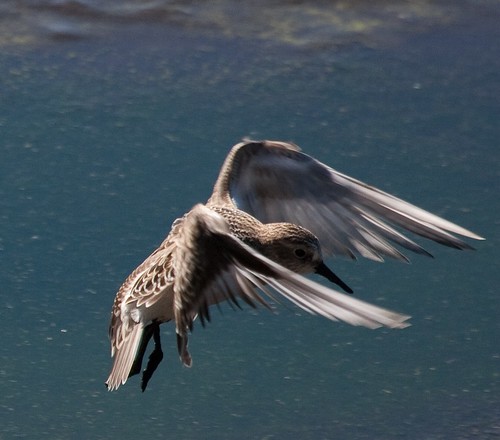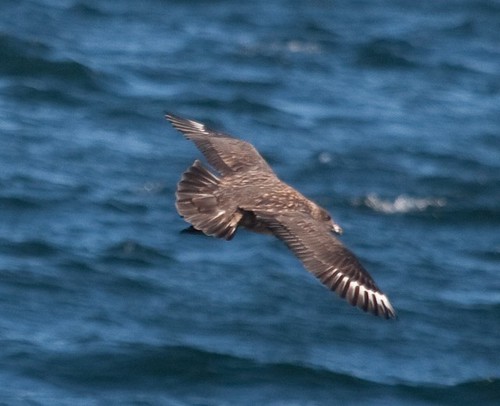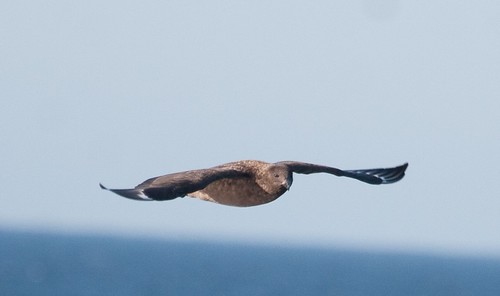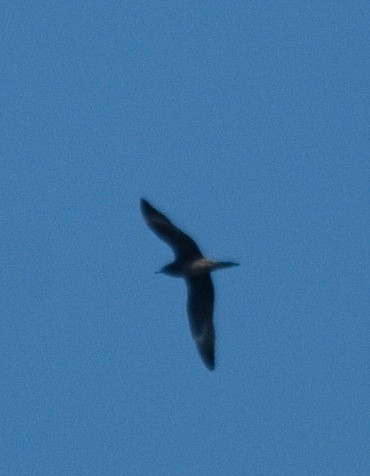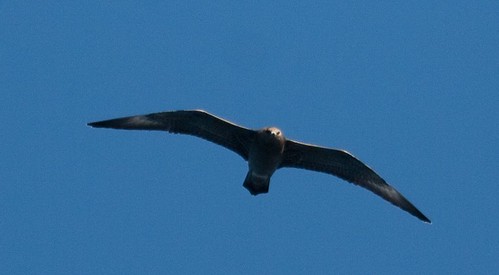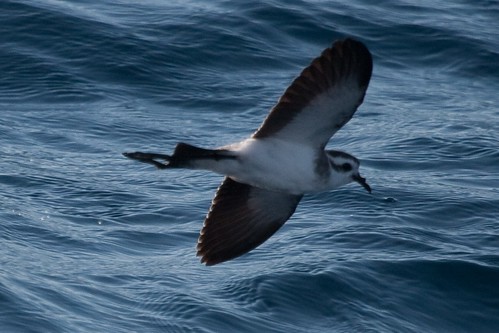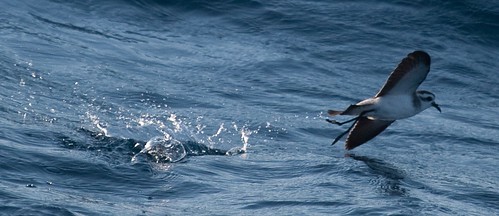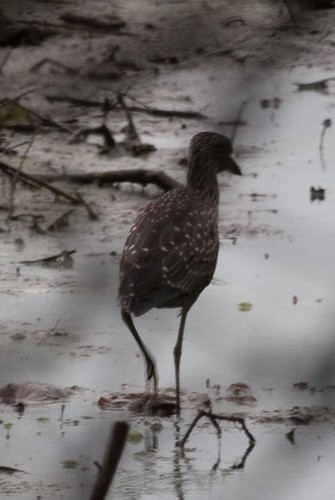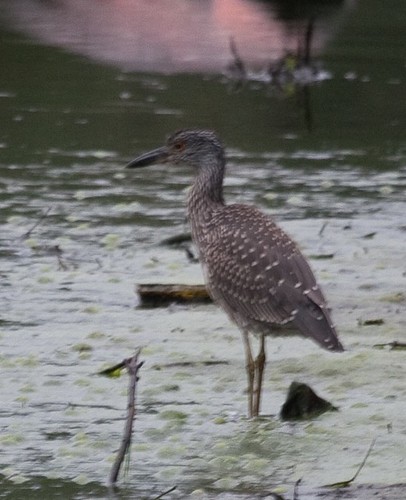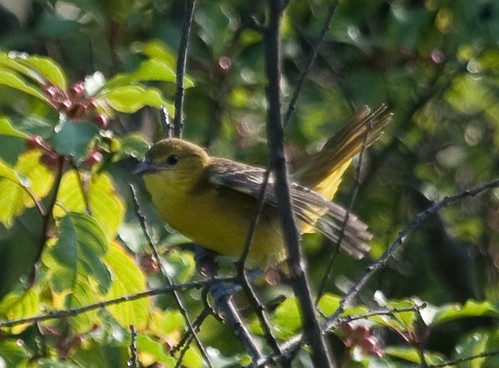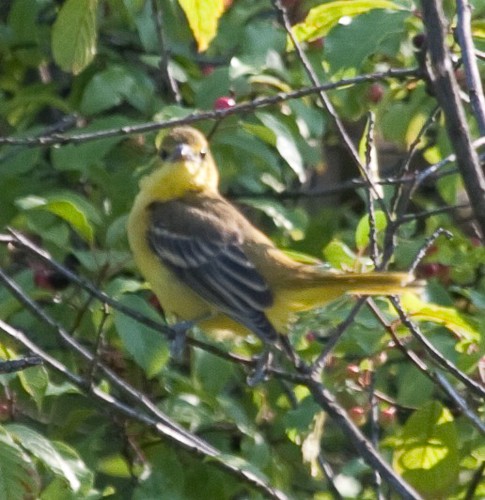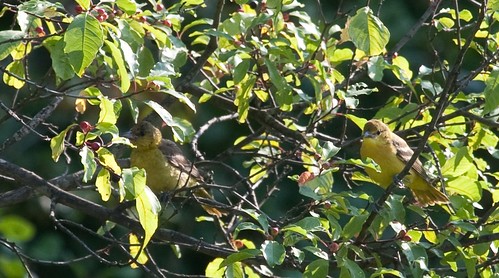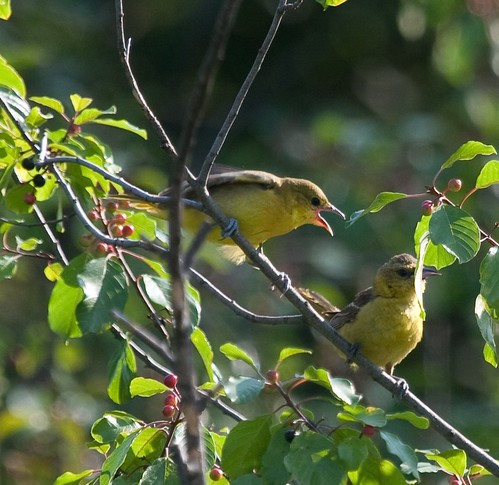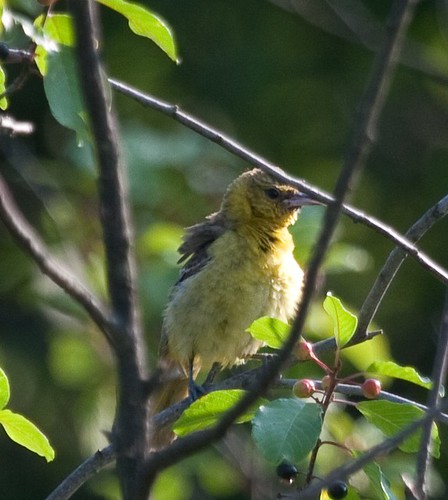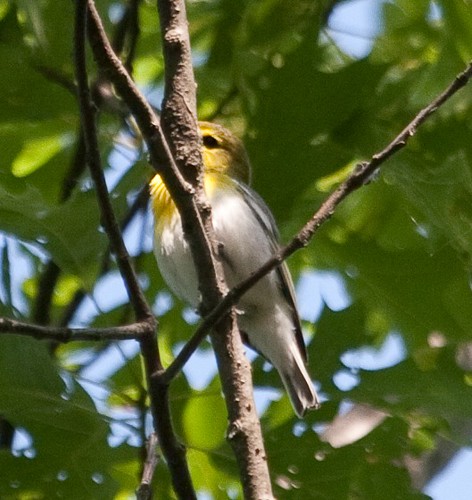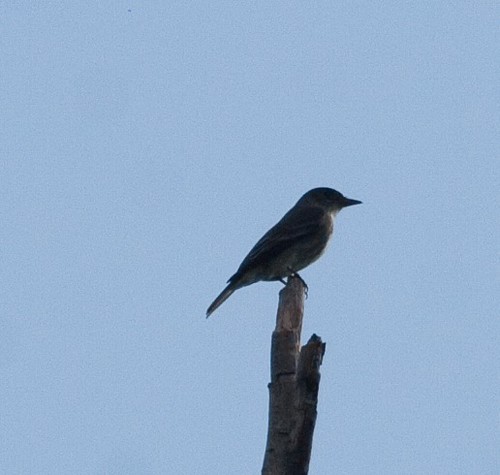With the 3 day weekend, I was out and about for most of it.
Saturday started with a walk around Beaver Brook North. I began by retracing the route of last week’s walk. Fewer warblers and sparrows but 4 Eastern Bluebirds were new. On the way back, I continued through the Met State portion of the reservation. It was pretty quiet on the whole but a Purple Finch on the parkway was nice. Even nicer was the Purple Finch that dropped onto the deck shortly after I got home (first in about 12 years in the yard I think):
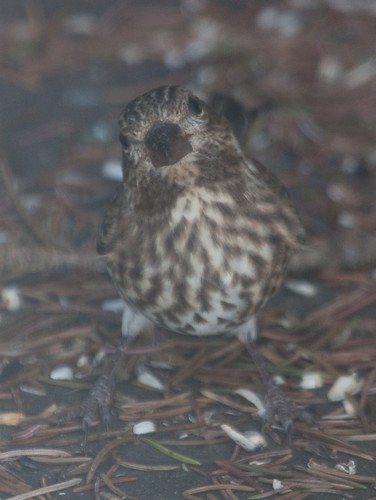
In the afternoon, my parents and I went for a walk around Great Meadows. Beyond a big flock of swifts and swallows, there wasn’t much (still not a lot of visible water even with the new platform open) but it was a pleasant walk.
Sunday was the Big Sit, the annual event where you confine yourself to a single spot and try to rack up the most species. This was the first time I’ve done it and if the wind was a bit less constant it would have been a really great day. Not that it was bad.
I wasn’t quite as crazy as my co-sitters Chris and Josh and I joined them at the Parking Lot 7 tower at Plum Island around 7:30. Hopefully one of them will post more, but here’s some highlights:
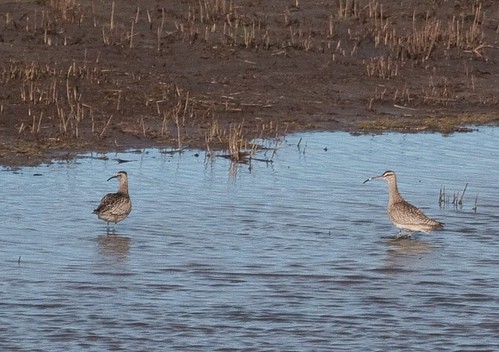
Two Whimbrel dropped in for a few minutes.
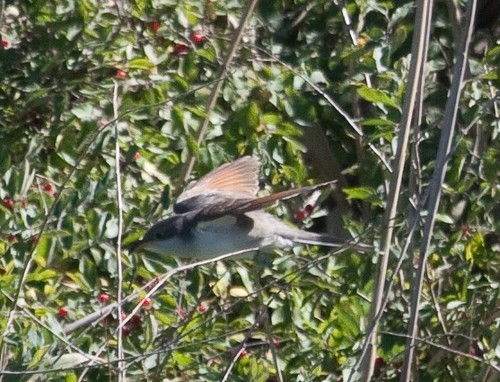
Chris found a Yellow-billed Cuckoo late in the morning.
I took a lunchtime break for the Curlew Sandpiper (and Black Skimmers). Probably 50 people have almost identical photos but here’s two of mine:
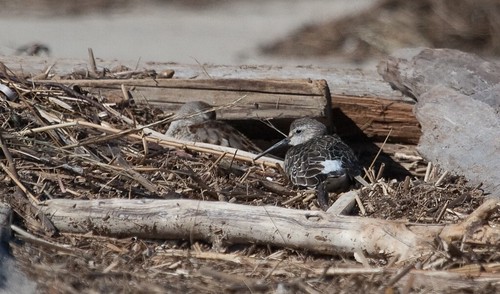
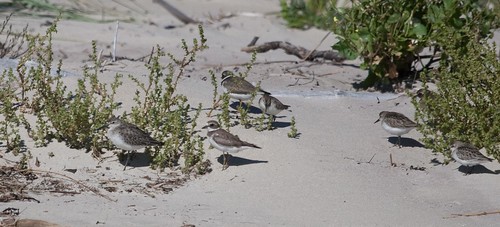
The Cuckoo returned for the afternoon:
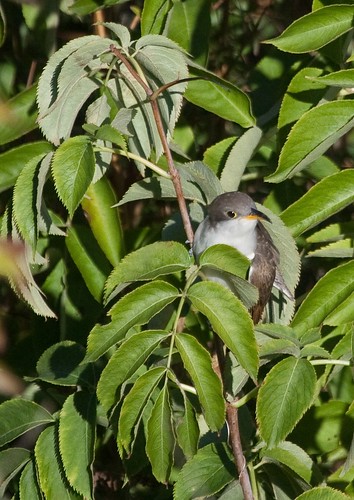
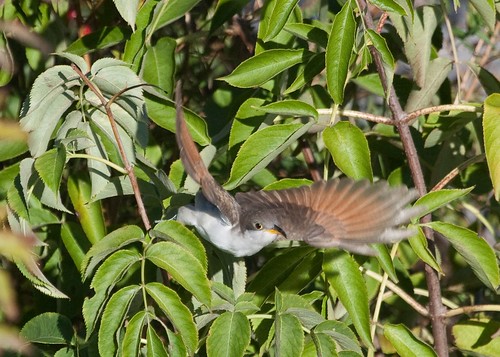
Those photos were a second apart at most, didn’t even realize I had a flight shot until reviewing them.
It was pretty dark at 6:30, so we headed out content with 68 species (one of us should have stayed to count the woodcock that flushed a few feet up the road).
Sunday began with the Menotomy walk at Rock Meadow. Birds all over, including several White-crowned Sparrows and 5 species of warbler but nothing really good (Merlin did turn out to be #99 for me at Rock Meadow). A few birds were photogenic:
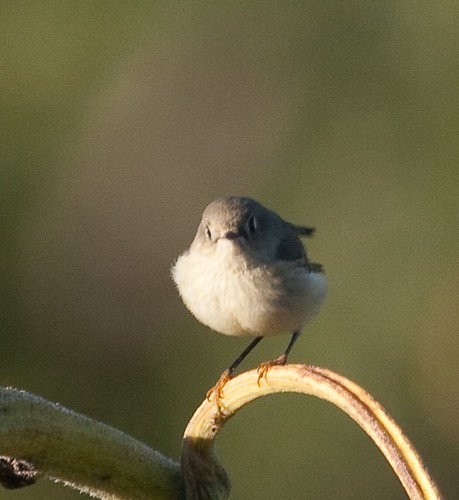
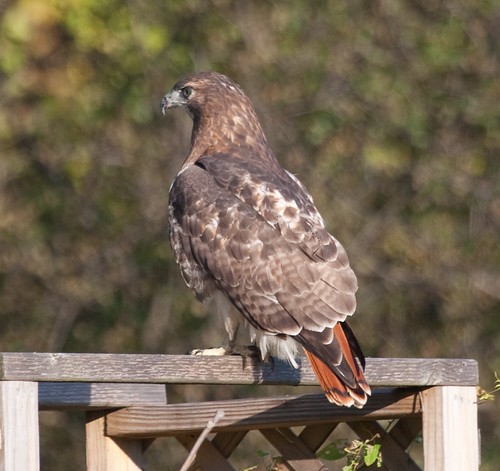
After the walk, we headed to the Arlington Res where a Snow Goose had been hanging out for the last couple days. We were joined by Leslie almost immediately and ran into Bob and Chris on the way. They had no luck with the goose or Rusty Blackbird that had been around as well, but did have a lot of sparrows and warblers (mostly what we had just seen at Rock Meadow). We found most of those and added a Blue-headed Vireo. Most of the warblers and sparrows were at the Busa fields and on return from there, many geese were noisy, which suggested that they had just arrived. I plopped the scope down to scan through and sure enough, the Snow Goose was among them.
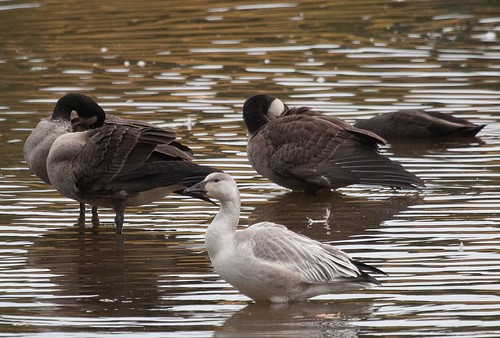
We worked our way around, chatting with Soheil and Bob (again). There wasn’t much else the rest of the way, so we finished pretty quickly (and I ran back around to get some goose photos). Just over 100 species on the weekend.
